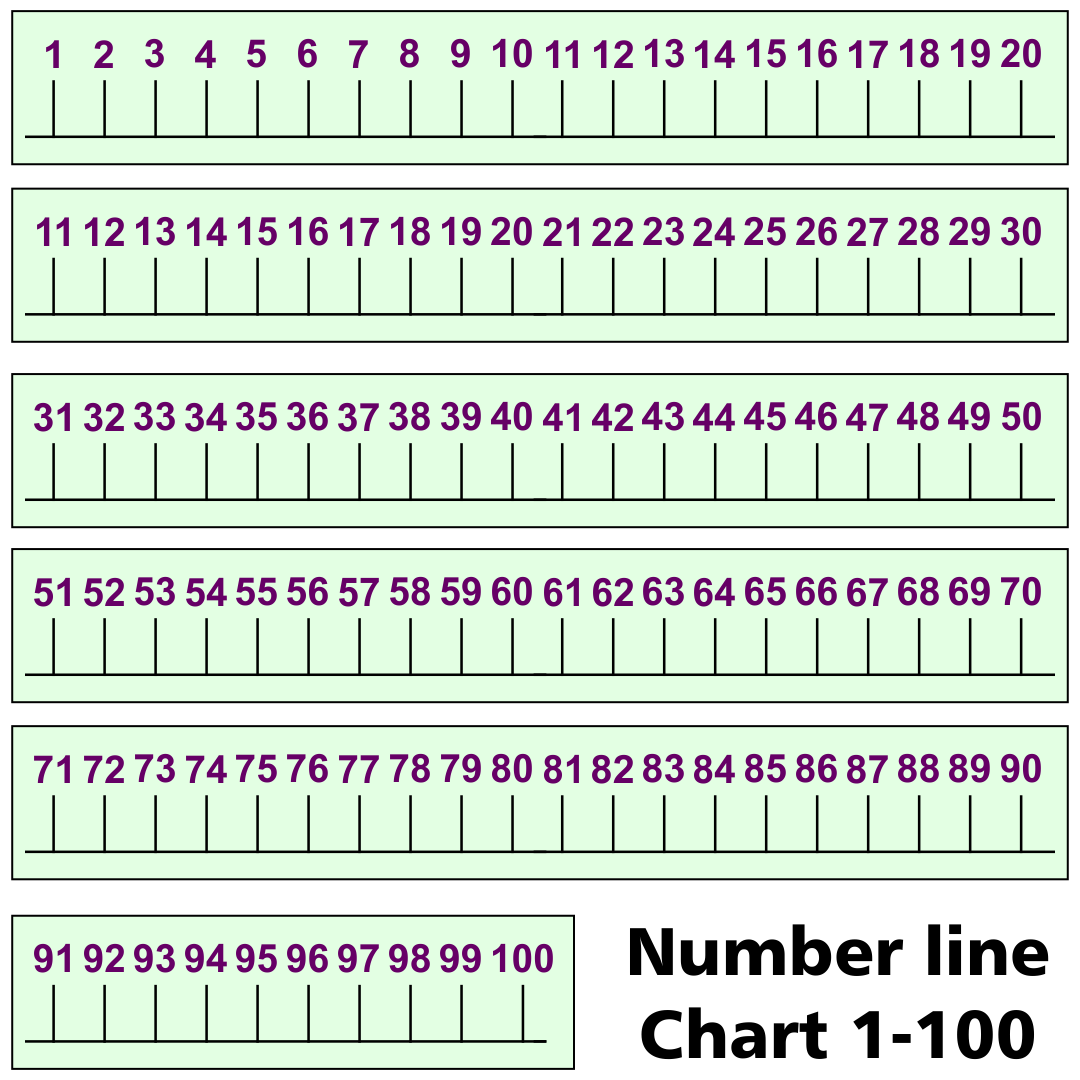As we journey through the educational system, it is important to have a strong foundation of numbers and their relationships. One way to aid in this process is through the use of a number line. In this post, we will explore the benefits and uses of a number line, particularly one that ranges from 1-100.
Image 1: Free Printable Number Line 1-100
 Here we have an excellent resource for a printable number line from 1-100. This can be a helpful tool for young students, or even adults, who are learning or refining their understanding of numbers and their organization on a line. The image is clear and easy to read, and the line is marked with each integer from 1-100, making it simple to identify and determine the relationship between numbers.
Here we have an excellent resource for a printable number line from 1-100. This can be a helpful tool for young students, or even adults, who are learning or refining their understanding of numbers and their organization on a line. The image is clear and easy to read, and the line is marked with each integer from 1-100, making it simple to identify and determine the relationship between numbers.
Image 2: Number Line 0-100
 This number line is slightly different from the previous image, as it ranges from 0-100 instead of 1-100. In some cases, it may be useful to use a number line with 0 included, particularly if one is working with negative numbers. However, for our purposes, we will focus on the range from 1-100.
This number line is slightly different from the previous image, as it ranges from 0-100 instead of 1-100. In some cases, it may be useful to use a number line with 0 included, particularly if one is working with negative numbers. However, for our purposes, we will focus on the range from 1-100.
The Benefits of Using a Number Line
Now that we have established what a number line is and provided some examples for reference, let’s dive into the benefits of using a number line to aid in the understanding of numbers.
One of the primary benefits of a number line is that it provides a visual representation of numbers and their organization. This can be especially helpful for those who are visual learners and need to see a concrete object in order to grasp a concept. By having each number clearly marked on a line, it becomes easier to identify where each number falls in relation to other numbers on the line.
In addition to being a helpful visual aid, number lines can also aid in mental math. By having a concrete visual representation of numbers, it becomes easier to add or subtract numbers mentally. For example, if a student is asked to subtract 17 from 42, they may visualize the number line with 42 at the top and 17 lower on the line, then count backwards to determine the answer.
Number lines can also aid in the understanding of more complex concepts such as fractions and decimals. By seeing where fractions and decimals fall on a number line, it becomes easier to understand their relationship to one another and to whole numbers.
Using a Number Line in the Classroom
Number lines can be an incredibly useful tool in the classroom, particularly for young students who are just beginning to learn about numbers and their relationships. There are a variety of ways that number lines can be utilized in the classroom setting.
One approach is to create a large number line on the classroom wall. This allows students to easily reference and compare numbers, and can also be used as a tool for classroom games or activities. For example, a teacher may ask students to stand next to the number that is 5 more than 37, and the students would locate the correct number on the number line.
Another approach is to use individual number lines for each student. These can be printed out and laminated, allowing students to write on them with dry erase markers and easily erase any mistakes. This allows for individual practice and assessment, as well as the ability for students to take their number line home and continue practicing outside of the classroom.
Regardless of the approach taken, it is clear that using a number line in the classroom can have significant benefits for students in terms of understanding and mastering numbers.
Conclusion
Overall, a number line can be an incredibly useful tool for both students and adults working to understand and organize numbers. From aiding in mental math to helping with more complex concepts such as fractions and decimals, a number line provides a clear visual representation of numbers and their relationships. By incorporating number lines into the classroom setting, educators can help students develop a stronger foundation in mathematics that will serve them well throughout their educational journey and beyond.